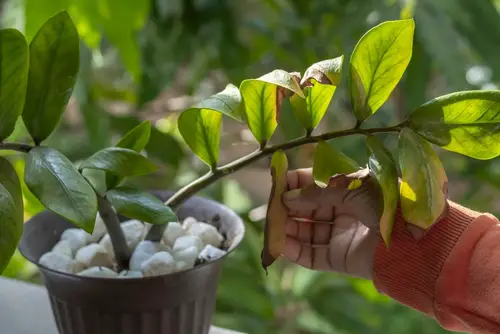ZZ plants are a popular houseplant due to their unique appearance and low-maintenance requirements. However, one problem that plant owners may encounter is ZZ plant stems drooping. ZZ plant stems may droop or fall over due to various reasons, including overwatering, insufficient light, and imbalanced fertilizer.
To understand ZZ plant drooping, it is essential to understand the plant itself. ZZ plants are native to Africa and are known for their ability to tolerate drought and low light conditions. These plants have thick, waxy leaves and stems that store water, making them a succulent plant.
ZZ plants are also slow-growing, making them an excellent choice for those who want a low-maintenance plant that can survive in low-light conditions.
Key Takeaways:
- ZZ plants are a popular houseplant due to their unique appearance and low-maintenance requirements.
- ZZ plant stems may droop or fall over due to various reasons, including overwatering, insufficient light, and imbalanced fertilizer.
- Understanding the ZZ plant’s growth requirements, identifying signs of stress, and providing proper watering and light conditions can help prevent ZZ plant stems from drooping.
More on this category:
Understanding ZZ Plant
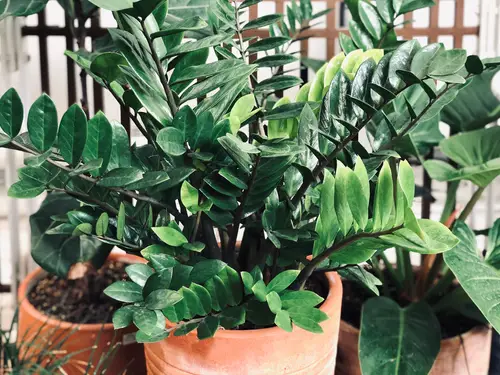
ZZ plant, also known as Zamioculcas zamiifolia, is a popular houseplant that is native to East Africa. It is a low-maintenance plant that can thrive in a variety of indoor conditions, making it a favorite among indoor gardeners. ZZ plant is also known as the “Zanzibar Gem” due to its shiny, gem-like appearance.
The ZZ plant has thick, waxy leaves that grow on long, slender stems. It can grow up to 2-3 feet tall and wide, making it a great choice for filling up empty corners or as a statement piece in any room. The plant is also known for its air-purifying properties, making it a great addition to any indoor space.
One of the unique features of the ZZ plant is that it can go for long periods without water. This is because it stores water in its thick, fleshy leaves and stems. ZZ plants prefer bright, indirect light, but can also tolerate low light conditions, making it a great choice for those with less sunny homes.
ZZ Plant Stems Drooping – 5 Common Problems
ZZ plants are popular houseplants known for their hardiness and resilience. However, like all plants, ZZ plants can experience problems, and one of the most common issues is drooping stems.
ZZ plant stems may droop or fall over for various reasons. In this section, we will explore some of the common causes of ZZ plant stem drooping.
1. Overwatering and Underwatering
Overwatering is one of the most common causes of ZZ plant stem drooping. ZZ plants are drought-resistant and prefer to be underwatered rather than overwatered.
When ZZ plants receive excess water, their roots can become waterlogged, leading to root rot, which can cause the stems to droop or fall over. On the other hand, underwatering can also cause ZZ plant stems to droop. When ZZ plants are underwatered, their leaves become dry and brittle, and the stems may droop or wilt.
2. Lighting Problems
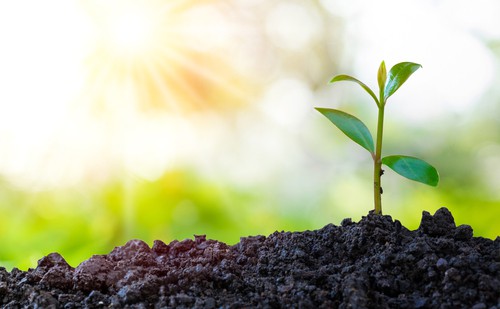
ZZ plants require bright, indirect light to thrive. Direct sunlight can scorch their leaves, causing them to droop or fall over. On the other hand, low light can also cause ZZ plant stems to droop. ZZ plants that do not receive enough light may become leggy and weak, causing their stems to droop or fall over.
3. Temperature Problems
ZZ plants prefer warm temperatures between 65-75°F (18-24°C). Low temperatures can cause ZZ plant stems to droop or become limp. High temperatures can also cause problems, as ZZ plants may become stressed and their stems may droop or wilt.
4. Fertilization Problems
ZZ plants require minimal fertilization. Too much fertilizer can cause salt buildup in the soil, leading to root burn and ZZ plant stem drooping. Lack of fertilizer can also cause ZZ plant stems to droop, as the plant may not receive enough nutrients to support healthy growth.
5. Transplant Stress
Transplant stress can cause ZZ plant stems to droop or fall over. When ZZ plants are transplanted, their roots may become damaged or disturbed, causing stress to the plant. ZZ plants may take some time to recover from transplant shock, and their stems may droop or wilt during this period.
Identifying Signs of Stress in ZZ Plant
ZZ plants are generally low-maintenance, but they can still experience stress. Identifying signs of stress early on can help you fix the problem before it becomes worse. Here are some common signs of stress in ZZ plants:
1. Physical Damage
Physical damage is one of the most obvious signs of stress in ZZ plants. This can include broken stems, damaged leaves, or even insect bites. Physical damage can weaken the plant and make it more susceptible to disease.
2. Stunted Growth
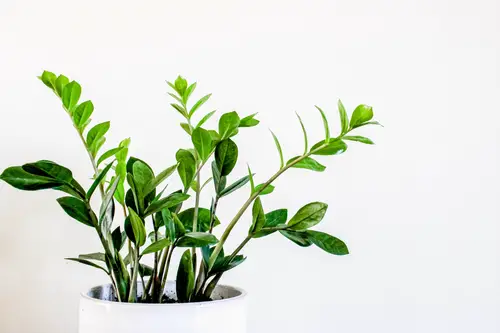
Stunted growth is another sign of stress in ZZ plants. If your plant is not growing as quickly as it should, it may be due to a lack of nutrients, water, or light. ZZ plants need to be fertilized regularly and watered when the soil is dry to the touch.
3. Drooping Leaves
Drooping leaves are a common sign of stress in ZZ plants. This can be caused by overwatering, underwatering, or poor lighting conditions. ZZ plants prefer bright, indirect light, but they can also survive in low-light conditions.
4. Yellow Leaves
Yellow leaves are another sign of stress in ZZ plants. This can be caused by overwatering, underwatering, or nutrient deficiencies. ZZ plants need to be watered sparingly, and they should be fertilized regularly to ensure they are getting enough nutrients.
Root Problems in ZZ Plant
ZZ plants are known for their hardiness and ability to survive in low light conditions. However, they are not immune to root problems, which can cause the stems to droop and the leaves to turn yellow.
1. Root Rot
One of the most common causes of ZZ plant stem drooping is root rot. This occurs when the roots are overwatered and become waterlogged, leading to the growth of anaerobic bacteria. The bacteria produce toxins that damage the roots, making it difficult for the plant to absorb water and nutrients.
To prevent root rot, ZZ plants should be watered sparingly. They prefer to be slightly dry between watering sessions. ZZ plants should be planted in well-draining soil, and the pot should have drainage holes to allow excess water to escape.
2. Root Damage
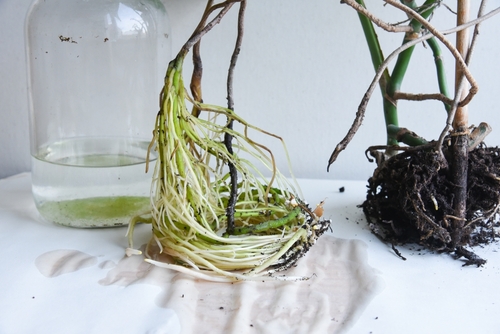
Root damage can also cause ZZ plant stems to droop. This can occur when the plant is repotted or when the roots are disturbed during routine maintenance. Damaged roots cannot absorb water and nutrients effectively, leading to drooping stems and yellowing leaves.
To avoid root damage, ZZ plants should be repotted only when necessary, and care should be taken to avoid damaging the roots during routine maintenance. If the roots are damaged, they should be trimmed with clean, sharp scissors.
3. Rootbound
ZZ plants can also become rootbound, which occurs when the roots outgrow the pot and become tangled. This can lead to stunted growth, yellowing leaves, and drooping stems.
To prevent ZZ plants from becoming rootbound, they should be repotted every two to three years. When repotting, the plant should be moved to a pot that is one size larger, and fresh soil should be added.
Watering and Soil Requirements for ZZ Plant
Watering Issues
Overwatering is one of the most common issues that ZZ plants face. ZZ plants prefer soil on the dry side, mimicking the semi-arid conditions in their native habitat. Water only when the soil feels completely dry, including at the root level.
ZZ plants are susceptible to root rot, so it is essential to avoid overwatering. One way to check the soil moisture level is by using a moisture meter. Insert the probe into the soil, and if the reading is low, then it’s time to water the plant.
Underwatering is another issue that ZZ plants face. ZZ plants can tolerate dry soil, but if the soil is too dry, the stems may start to droop. ZZ plants are drought-tolerant, but it’s essential to water them regularly, especially during the growing season.
Soil Conditions
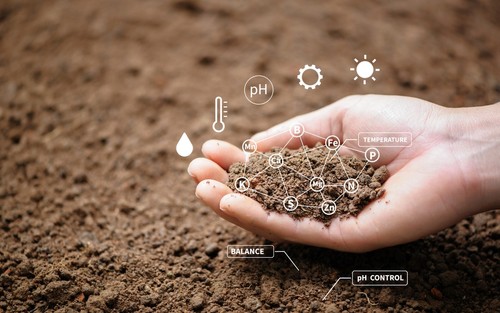
ZZ plants require well-draining soil. The soil should be light and porous, allowing water to saturate it fully, but also drain from it quickly, allowing the soil to dry out completely between waterings.
A well-draining soil mix is a combination of peat moss, perlite, and sand. Avoid using heavy soils or soils that hold onto water for too long, as these can cause root rot.
When repotting ZZ plants, it’s essential to use the right soil mix. A soil mix that is too heavy or too dense can cause water to accumulate around the roots, leading to root rot. A soil mix that is too light can cause the soil to dry out too quickly, leading to underwatering.
Light and Temperature Requirements for ZZ Plant
Ideal Lighting Conditions
ZZ plants thrive in bright, indirect light. They can tolerate low light conditions, but they will not grow as quickly or as robustly. Direct sunlight can burn the leaves and cause sunburn, so it is best to avoid placing ZZ plants in full sun. If a ZZ plant does not receive enough light, its stems can become weak and droop.
If you are growing ZZ plants indoors, place them near a window that receives bright, indirect light. West-facing windows are ideal because they receive bright, indirect light in the afternoon.
If you do not have a west-facing window, an east-facing window is the next best option. If the light in your home is not sufficient, you can supplement it with artificial light. A grow light is an excellent option for ZZ plants.
Ideal Temperature Conditions
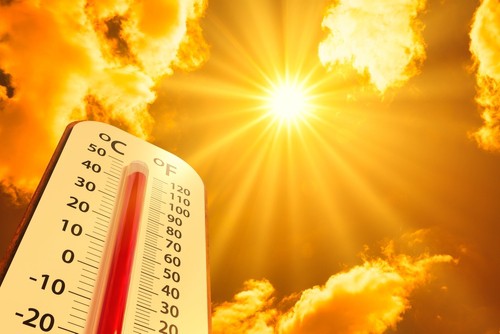
ZZ plants prefer warm temperatures between 65-75°F (18-24°C). They can tolerate temperatures as low as 45°F (7°C), but they will not grow as quickly or as robustly. Drafts and temperature fluctuations can cause stress to the plant and result in drooping stems.
If you are growing ZZ plants indoors, place them in a room with a consistent temperature. Avoid placing them near doors or windows that may cause temperature fluctuations.
If you live in a colder climate, it is essential to protect your ZZ plant from cold drafts. A ZZ plant can handle a wide range of humidity levels, but it prefers moderate to high humidity.
Common Problems and Solutions for ZZ Plant
ZZ plants are known for their hardiness and adaptability, but they are not immune to problems. If you notice that your ZZ plant’s stems are drooping, there are a few common issues that could be causing the problem. Here are some possible causes and solutions:
1. Disease and Fungi
One of the most common causes of ZZ plant stems drooping is disease or fungi. This can be caused by overwatering, which can lead to root rot and other issues. If you suspect that your ZZ plant is suffering from disease or fungi, it is important to take action quickly to prevent further harm.
To prevent disease and fungi, ZZ plants need to be watered correctly. ZZ plants should be watered only when the soil is dry to the touch. Overwatering can lead to root rot, which can cause the plant to wilt and eventually die.
If you suspect that your ZZ plant is suffering from disease or fungi, you can treat it with a fungicide or other appropriate treatment.
2. Repotting and Transplantation
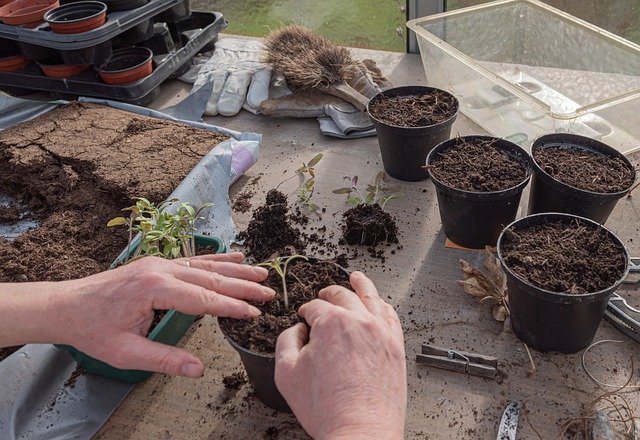
Another common cause of ZZ plant stems drooping is repotting or transplantation. ZZ plants prefer to be in smaller pots, and they do not like to be disturbed. If you have recently repotted your ZZ plant or transplanted it to a new location, it may take some time for the plant to adjust.
To prevent ZZ plant stalks from falling over after repotting, it is important to choose a pot that is only slightly bigger than the current one. ZZ plants do not like to be in wide pots, and they prefer to be slightly root-bound. When repotting, be sure to use a well-draining soil mix and avoid overwatering.
3. Fertilization Problems
ZZ plants do not require frequent fertilization, but they do need some nutrients to thrive. If your ZZ plant is not getting enough nutrients, it may start to droop and wilt. To prevent fertilization problems, ZZ plants should be fertilized once a month during the growing season.
When fertilizing, be sure to use a balanced fertilizer that is appropriate for ZZ plants. Avoid over-fertilizing, as this can lead to burning and other issues.
4. Temperature Problems
ZZ plants prefer warm temperatures, and they do not like to be in cold or drafty locations. If your ZZ plant is in a location that is too cold, it may start to droop and wilt. To prevent temperature problems, ZZ plants should be kept in a location that is between 60 and 75 degrees Fahrenheit.
If your ZZ plant is in a location that is too cold, you can move it to a warmer location or use a space heater to provide additional warmth. Be sure to avoid placing your ZZ plant in direct sunlight, as this can lead to dehydration and drying.
Understanding ZZ Plant Growth
ZZ plants, also known as Zamioculcas zamiifolia, are popular houseplants due to their easy care and attractive appearance. Understanding the growth of ZZ plants can help you identify and address issues like drooping stems.
1. Plant Growth
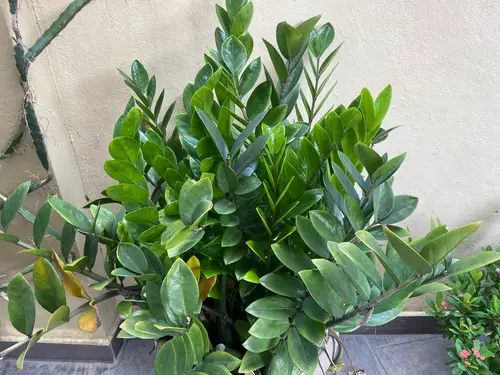
ZZ plants are slow-growing plants that can reach up to three feet in height. They grow from rhizomes, which are underground stems that produce leaves and roots. The leaves of ZZ plants are thick, glossy, and dark green. The stems are thick and fleshy, and they can store water for the plant to use during periods of drought.
2. Growing Season
ZZ plants are native to eastern Africa, where they grow in tropical forests. They are adapted to warm temperatures and high humidity, but they can also tolerate lower light and drier conditions. ZZ plants can grow year-round if they are provided with the right conditions, but they may slow down or go dormant in the winter.
3. ZZ Plants and Drooping Stems
ZZ plant stems can droop or fall over for several reasons. Overwatering is the most common cause of drooping stems in ZZ plants. When the soil is too wet, the roots can become damaged or rot, which can cause the stems to droop.
Underwatering can also cause ZZ plant stems to droop, as the plant may not have enough water to support its growth.
Other factors that can cause ZZ plant stems to droop include:
- Lack of light: ZZ plants need bright, indirect light to grow properly. If they are kept in low light conditions, the stems may become weak and droop.
- Temperature stress: ZZ plants prefer temperatures between 60 and 75 degrees Fahrenheit. If they are exposed to temperatures outside of this range, the stems may droop or become damaged.
- Transplant shock: ZZ plants can experience transplant shock if they are moved to a new pot or location. This can cause the stems to droop temporarily.
- Physical damage: ZZ plants can be damaged by pests, such as spider mites or mealybugs, or by rough handling. This can cause the stems to droop or become distorted.
By understanding the growth of ZZ plants and the factors that can cause drooping stems, you can take steps to keep your plant healthy and thriving.
Frequently Asked Questions
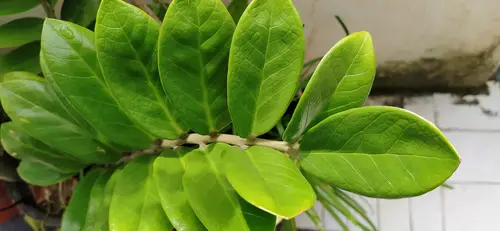
How to fix leggy ZZ plant
If your ZZ plant is leggy, it means that the stem is too long and the leaves are sparse. This is a common problem with ZZ plants that are not getting enough light. To fix a leggy ZZ plant, move it to a brighter spot with indirect light. You can also prune the stem to encourage new growth.
ZZ plant stems too heavy
If the stems of your ZZ plant are too heavy, it may be a sign of overwatering. ZZ plants are succulents and do not require frequent watering. Make sure the soil is completely dry before watering again. You can also add a support stake to help the stems stay upright.
Underwatered ZZ plant
If your ZZ plant is underwatered, the leaves may start to droop. ZZ plants prefer to be slightly dry between watering. Make sure the soil is completely dry before watering again. You can also mist the leaves to increase humidity.
Why is my ZZ plant turning yellow
Yellow leaves on a ZZ plant can be a sign of overwatering, underwatering, or lack of light. Check the soil moisture level and adjust watering accordingly. Move the plant to a brighter spot with indirect light.
How to prune ZZ plant
Pruning ZZ plants is easy and can help promote new growth. Use clean, sharp scissors to cut the stem just above a node. This will encourage new growth from the node. You can also remove any yellow or damaged leaves.
ZZ plant dropping leaves
If your ZZ plant is dropping leaves, it may be a sign of overwatering or underwatering. Check the soil moisture level and adjust watering accordingly. ZZ plants can also drop leaves if they are in a drafty area or if the humidity is too low.

Hey, I’m Lisa and I’ve been an avid gardener for over 30 years. I love writing, talking and living in the garden! Feel free to connect with me on my socials below

